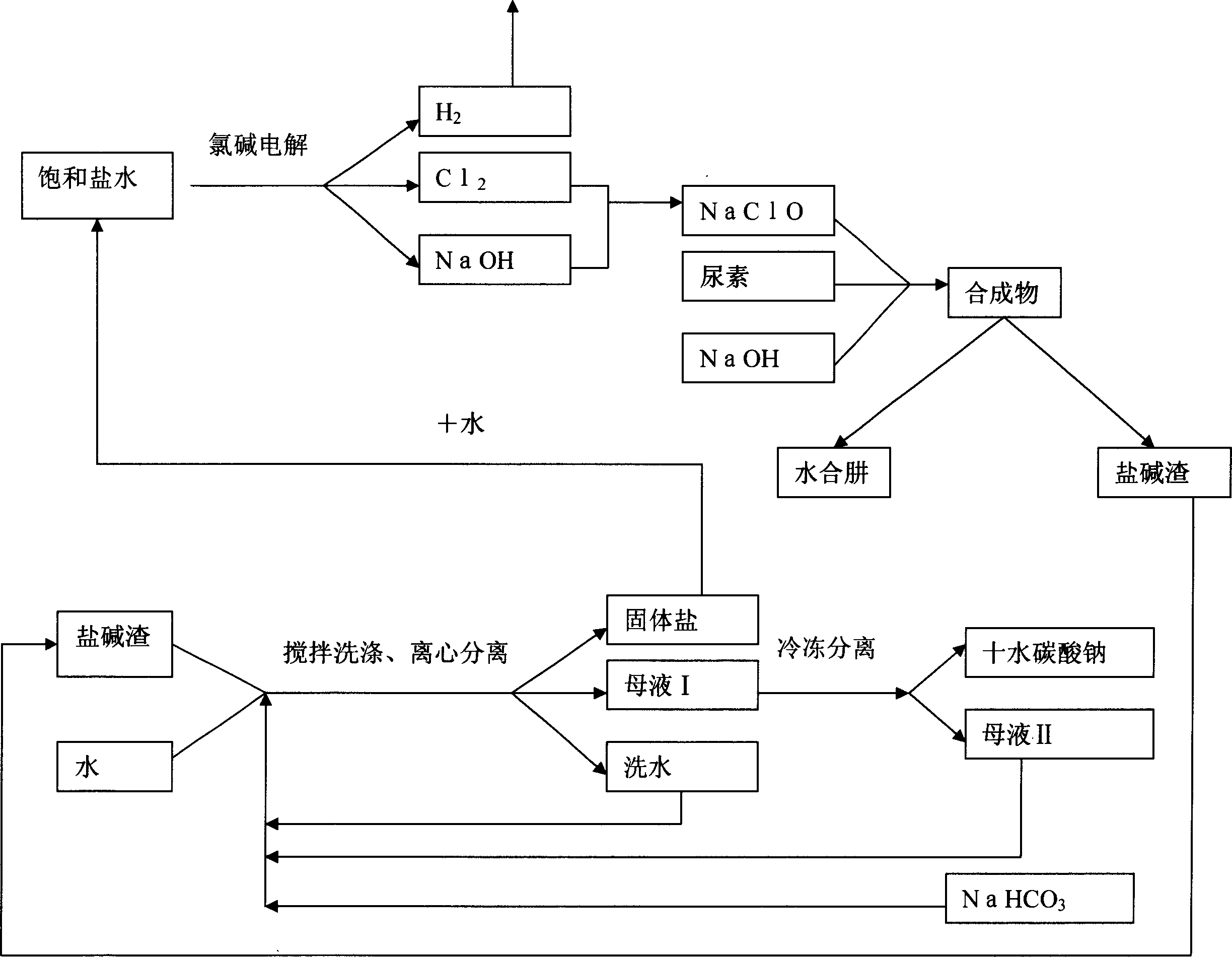Separation of salt and alkali from waste salt and alkali residue in production of hydrazine hydrate and technique of cyclic utilization
A technology of hydrazine hydrate and saline-alkali, applied in the direction of hydrazine, carbonate preparations, alkali metal chlorides, etc., can solve the problems of discharge into rivers and lakes, water pollution, etc., achieve high separation quality, do not pollute the environment, and solve the environment pollution effect
- Summary
- Abstract
- Description
- Claims
- Application Information
AI Technical Summary
Problems solved by technology
Method used
Image
Examples
Embodiment Construction
[0022] Such as figure 1 As shown, the salt-alkali separation and recycling technology of waste salt-alkali residue in the production of hydrazine hydrate in the present invention, the composition of the salt-alkali residue is sodium chloride NaCl 70%, sodium carbonate Na 2 CO 3 10~15%, sodium hydroxide NaOH2%, 0.5~0.6% hydrazine and amine, water H 2 O 12-15%, the specific steps are as follows:
[0023] The first step: the water H 2 O, mother liquor II and sodium bicarbonate NaHCO 3 Add the waste salt and alkali residue to the stirring washing tank at the ratio of liquid: solid = 1.2:1, heating to 50°C and stirring and washing for 2 hours. After centrifugal separation, solid salt NaCl, mother liquor I and washing water H are obtained. 2 O;
[0024] The solid salt NaCl is ready for use, and the mother liquor I is cooled to 3°C and centrifuged to obtain solid sodium carbonate decahydrate Na 2 CO 3 ·10H 2 O and mother liquor II, separated mother liquor II and washing water H 2 O stand...
PUM
 Login to View More
Login to View More Abstract
Description
Claims
Application Information
 Login to View More
Login to View More - R&D
- Intellectual Property
- Life Sciences
- Materials
- Tech Scout
- Unparalleled Data Quality
- Higher Quality Content
- 60% Fewer Hallucinations
Browse by: Latest US Patents, China's latest patents, Technical Efficacy Thesaurus, Application Domain, Technology Topic, Popular Technical Reports.
© 2025 PatSnap. All rights reserved.Legal|Privacy policy|Modern Slavery Act Transparency Statement|Sitemap|About US| Contact US: help@patsnap.com

